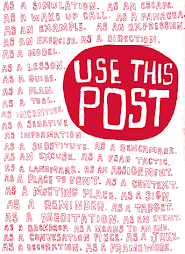During the storm, the densest quantity of Sandy-related tweets emerged from Manhattan, relative to other boroughs of the city. But that doesn’t mean that Manhattan suffered the worst damage; rather, that it often produces the largest quantity of data. It’s easy to conflate the two, though, which is why maps often equate with power.
Graham doesn’t know exactly what this might look like, but it might help, he suggests, if the platforms that we use to access information did a better job of telling us what they don’t know. Think, for instance, of all the Wikipedia pages begging for more information. What if the whole geoweb were populated with empty placeholders that announced "something belongs here about the Rwandan tourism industry, but no one has filled it in yet"?
Every technological innovation today around a new smart-phone app or web platform improving quality of life in citiescomes with a caveat. What about the people who can’t access those tools? What about the people on the other side of the digital divide who lack access to home computers, Internet connections, unlimited data plans? These are the people who go "unmapped" in the geoweb.
why this is so important..
and could be doing today - via all the moneys we normally send/squander toward compulsory public ed and [health and death et al.. from that compulsions]
http://www.slate.com/articles/technology/future_tense/2013/02/silent_circle_s_latest_app_democratizes_encryption_governments_won_t_be.single.html
allow people to make secure phone calls and send texts easily. Now, the company is pushing things even further—with a groundbreaking encrypted data transfer app that will enable people to send files securely from a smartphone or tablet at the touch of a button. (For now, it’s just being released for iPhones and iPads, though Android versions should come soon.) That means photographs, videos, spreadsheets, you name it—sent scrambled from one person to another in a matter of seconds.




































